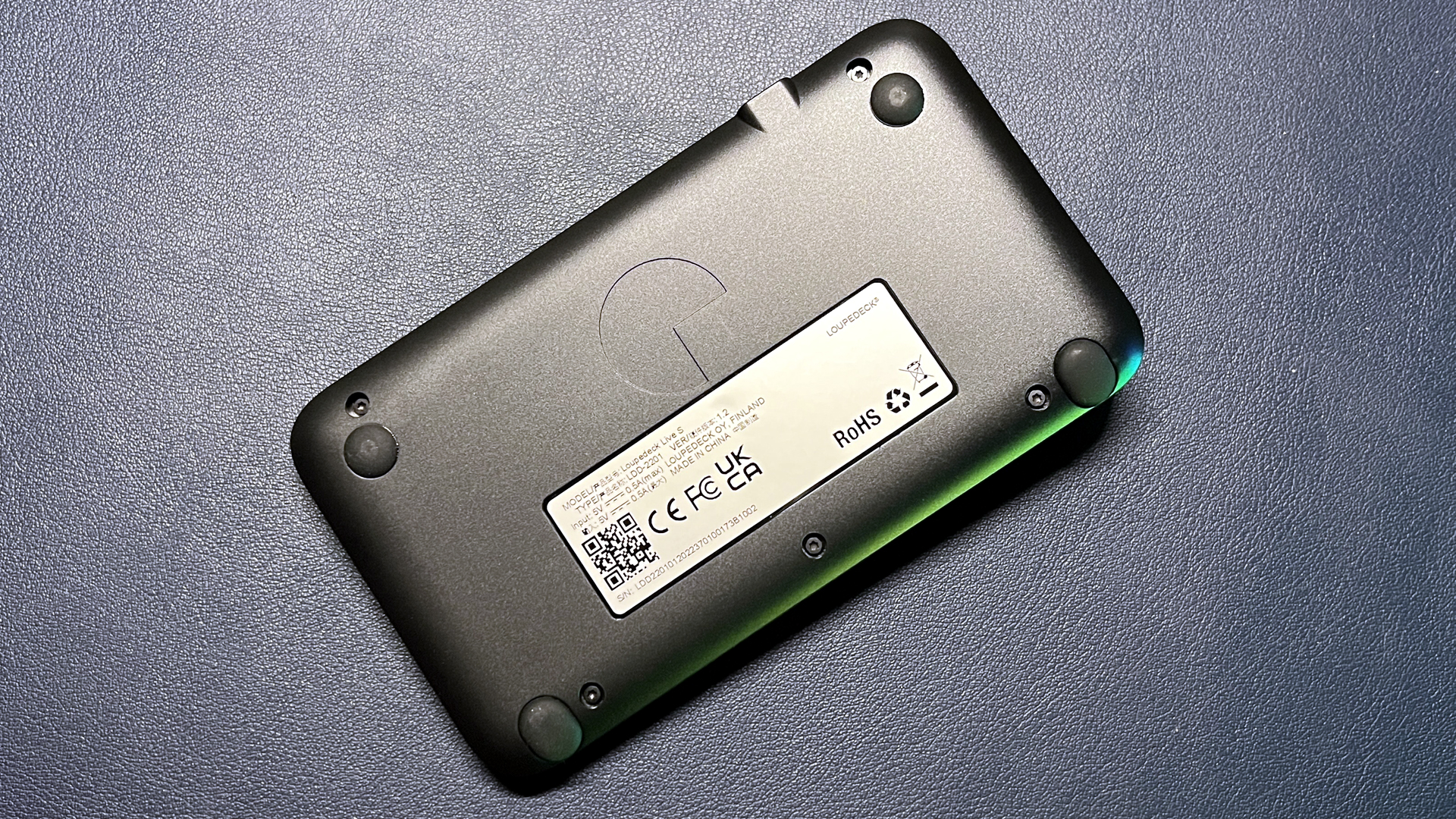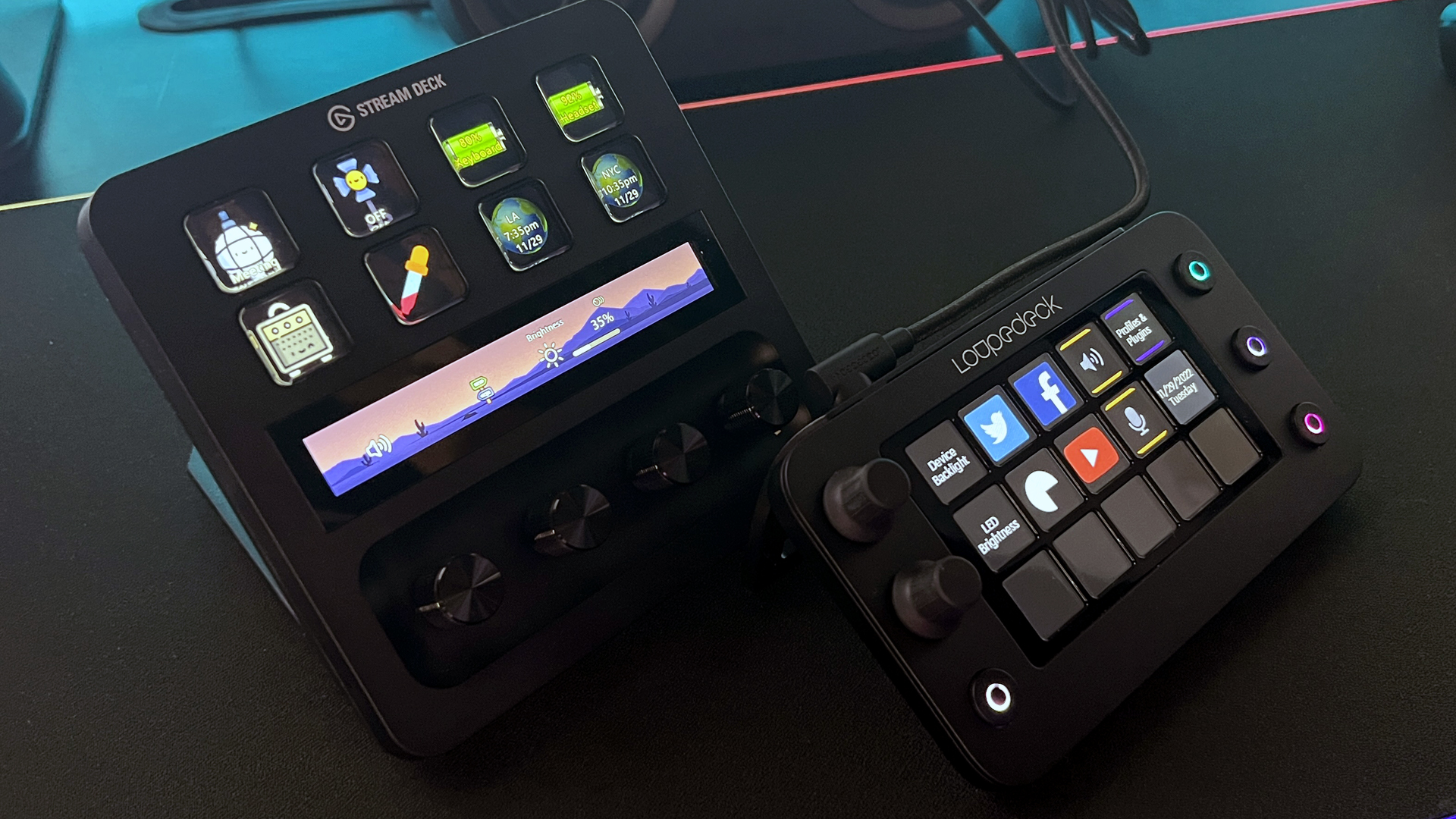Tom's Hardware Verdict
The Loupedeck Live S is a highly customizable streaming control console with touch, tactile, and dial input. Kind of like the two-week-old Stream Deck+.
Pros
- +
Highly customizable
- +
Native support for Adobe products
- +
Native MIDI mapping
- +
Sleek and portable
Cons
- -
Expensive
- -
Flimsy stand
- -
Dial display is clunky
Why you can trust Tom's Hardware
Considering how much gamers love extra, programmable keys and buttons on keyboards and mice, it’s surprising how few standalone macro/control pads exist — especially for streamers and gamers. The market is almost entirely dominated by two companies: Elgato and Loupedeck, but the competition is fierce.
Elgato just came out with its new Stream Deck+, and now Loupedeck has officially launched its Live S console (which was first announced as an Indiegogo campaign in June 2022). With an MSRP of $179, the Live S enters Loupedeck’s lineup as its smallest and most affordable console from the company to date.
Design of the Live S
The Loupedeck Live S is the smallest macro pad in Loupedeck’s product stack, with a layout that’s (unsurprisingly) similar to the Loupedeck Live. The Live S isn’t much larger than my iPhone 13 Pro, measuring 5.91 inches (150mm) wide by 3.39 inches (86mm) deep, and 1.18 inches (30mm) thick.
It’s housed in a lightweight but sturdy-feeling matte black plastic chassis, and it weighs 5.92 ounces (168g). It comes with a detachable stand, which makes it very portable and easy to travel with (unlike the Stream Deck+, which has a fixed stand).


The detachable stand snaps along the back of the Live S, setting the device at a 35-degree angle. With the stand attached, the Live S is approximately 2.25 inches (57mm) tall. The stand is easy enough to attach and remove, but it’s made of very thin plastic — it feels easily breakable, especially if you are attaching and removing it frequently.
The Live S has a touchscreen divided into 15 touch-sensitive buttons, which are flanked on either side by analog dials (two, on the left side) and four tactile RGB buttons (one on the left, three on the right). The analog dials are covered in soft-touch, rubbery material with raised tactile ridges. The tactile buttons are small, round, and plastic, and are somewhat stiff when pressed.


The Live S comes with a 6.5-foot (2m) braided USB-C to USB-C cable, a USB-C to USB-A adapter, and a detachable stand in the box.
Get Tom's Hardware's best news and in-depth reviews, straight to your inbox.
Specs
| Buttons (Tactile) | 4 |
| Buttons (Touch) | 15 |
| Dials | 2 (analog with push functionality) |
| Software | Loupedeck |
| Interface | USB-C (USB-C to USB-A adapter incl.) |
| Cable | USB-C to USB-C, 6.6ft / 2m |
| Dimensions (W x H x D) | 5.91 x 3.39 x 1.18 inches / 150 x 86 x 30 mm |
| Weight | 5.92oz / 168g |
| System Requirements | Windows 10 / macOS 10.13 or later |
| MSRP | $179 |
Buttons and Dials on the Live S
The Live S has 15 touch buttons and four tactile buttons. The touch buttons are dynamic, responsive, and, while they do not offer tactile feedback like the LED keys on Elgato’s Stream Decks, they do offer haptic feedback when pressed — albeit, very mild haptic feedback.
Because the touch buttons are actually just one touchscreen divided into 15 sections, the panel also accepts touch gesture input: you can swipe your finger horizontally across the screen to scroll through pages of buttons (up to 14), and you can swipe your finger vertically to scroll through pages (also up to 14) of dials.
The Live S also has four tactile buttons — one in the lower left corner and three on the right side of the touch panel. The buttons are small and circular and have built-in RGB lighting that can be customized (from a menu of 24 preset color options) using Loupedeck’s software.
Each button, except for the button in the lower left corner, has one layer of functionality (press). The button in the lower left corner has two layers of functionality (press and hold-down) — but only the first is customizable. Holding down this button switches to the Live S’s main profile; this cannot be changed. Loupedeck said in an email that programmable hold-down functionality in the other three buttons “might be available in future updates as we have it in the pipeline.”
The Live S has two notched tactile dials with push functionality. Although the Live S doesn’t have the same “dial stack” feature that the Stream Deck+ has, you can program up to 14 “dial pages,” which is basically the same thing (you’ll just have to swipe vertically to change dial functions). Loupedeck does natively support MIDI dial mapping, which lets you use it with MIDI-enabled instruments and digital audio workstations (DAWs). The Stream Deck+ doesn’t have native support for MIDI mapping (though there is a third-party Stream Deck plugin).
The Live S doesn’t have a dial strip, like the Live does, to display the dials’ functions. There is an option to turn on “dial display” in the Live S’s settings menu. This option turns the touch buttons next to each dial into a display. However, it also disables these buttons’ touch functionality on all pages — even if it’s a page with no dial functions assigned.
Software of the Live S
The Loupedeck Live S requires Loupedeck’s software to run. The software is also where you can customize the device, either by creating your own custom actions and macros from scratch, or by using pre-made profiles, plugins, and other assets from both Loupedeck and third-party content creators.
Like other macro pads and stream decks, the Loupedeck Live S is extremely customizable. What’s nice is that it ships with pre-installed plugins and profiles, meaning it’s pretty usable out of the box (and you have some templates to work off of, if you’re brand-new to this type of device). Using the software, you can set up your own profiles and workspaces — profiles are for different scenarios or apps, while workspaces are toolboxes within each profile. Each workspace can have up to 14 pages of buttons and 14 pages of dials.
The Live S comes with several profiles and plugins pre-installed, including OBS, Twitch, Streamlabs, Spotify, Philips Hue, Ableton Live, VMix, Final Cut Pro, and several Adobe creative apps (Photoshop, After Effects Pro, Lightroom Classic, Illustrator, Audition, and Premiere Pro). Native support for Adobe apps is one of the big advantages Loupedeck still has over Elgato — while Stream Decks can be configured to work with Adobe products, Loupedeck’s premade profiles are significantly more convenient.
You can also access the Loupedeck Marketplace from within the Loupedeck software. The Marketplace has additional assets, including plugins, profiles, stream overlays, emotes and badges, presets and styles, and icon and sound packs from both Loupedeck and third-party creators. The Marketplace lets creators post both free and paid assets — functional assets (profiles, plugins, icons, etc) are mostly free, while assets like stream overlays and emotes are mostly paid.
The Bottom Line
The Loupedeck Live S is a good entry-level addition to Loupedeck’s lineup — it offers an impressive amount of functionality considering it’s nearly $100 cheaper than the Loupedeck Live. It’s also extremely portable, which makes it an ideal option for creators who frequently travel or move between workspaces.
That said, it’s also priced very close to Elgato’s new Stream Deck+ ($199), which has similar functionality, with touch, tactile, and dial input options. And Elgato’s device has a sturdier and more premium-feeling build. There used to be a larger gap between Loupedeck’s consoles and Elgato’s decks, but these two recent launches are surprisingly similar.
Loupedeck started out with a focus on photo editing; the first Loupedeck was designed for Lightroom. To that point, the Live S still offers a slight advantage for traditional creators, such as photographers, video editors, and music producers, thanks to Loupedeck’s native support for creative apps, like Adobe products and MIDI mapping.
Elgato, on the other hand, has been gaming- and streaming-focused for years, and has an entire streaming ecosystem of capture cards, webcams, mics, lights, and more — all of which work seamlessly with its Stream Decks. Until the Stream Deck+, Stream Decks only had one type of input — buttons — but the Stream Deck+ adds both touch and dial input (and has four dials, versus the Live S’s two). Creators who are entirely streaming-focused may therefore find the Stream Deck+ easier to integrate into their workflow, especially if they have other Elgato (or Corsair) products.
In short,the Loupedeck Live S is an excellent control pad, but it’s not a clear winner (or loser) against Elgato’s Stream Deck+.

Sarah Jacobsson Purewal is a senior editor at Tom's Hardware covering peripherals, software, and custom builds. You can find more of her work in PCWorld, Macworld, TechHive, CNET, Gizmodo, Tom's Guide, PC Gamer, Men's Health, Men's Fitness, SHAPE, Cosmopolitan, and just about everywhere else.






